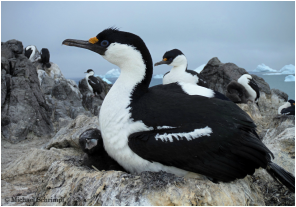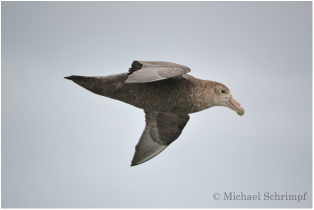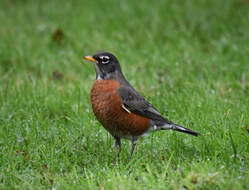My research involves several topics, all generally related to the ecology of bird communities.

Citizen Science
I strongly believe that everyone can help collect valuable scientific data around the world, even in the Antarctic. In my spare time, I often collect data and volunteer as a data reviewer for the eBird program. Together with Viking Expeditions and the Polar Citizen Science Collective, I am working on making eBird data collection a regular occurrence for visitors to polar regions. To better use those data for scientific anlyses, I lead a project with the Polar Collective to train expedition staff and the eBird Southern Ocean Calibration project to better understand the data.
I encourage anyone who has or will be visiting the Antarctic to consider submitting checklists of their birds through eBird. My current research is on designing methods to incorporate these data into the models that we use for studying seabird distributions. Please contact me with any questions you have on how to collect data that will be the most useful, and/or how to upload the data you've collected.
Other eBird users can follow my own recent birding adventures at my eBird profile.
I strongly believe that everyone can help collect valuable scientific data around the world, even in the Antarctic. In my spare time, I often collect data and volunteer as a data reviewer for the eBird program. Together with Viking Expeditions and the Polar Citizen Science Collective, I am working on making eBird data collection a regular occurrence for visitors to polar regions. To better use those data for scientific anlyses, I lead a project with the Polar Collective to train expedition staff and the eBird Southern Ocean Calibration project to better understand the data.
I encourage anyone who has or will be visiting the Antarctic to consider submitting checklists of their birds through eBird. My current research is on designing methods to incorporate these data into the models that we use for studying seabird distributions. Please contact me with any questions you have on how to collect data that will be the most useful, and/or how to upload the data you've collected.
Other eBird users can follow my own recent birding adventures at my eBird profile.
|
Birds during COVID-19
During lockdowns to address the COVID-19 pandemic, we humans dramatically altered our collective behavior, resulting in major changes to our interaction with wildlife. Along with many other ecologists around the world, I turned my attention to documenting these changes. During a postdoctoral fellowship in the Koper Lab at the Unviersity of Manitoba Natural Resources Institute, I used eBird data to show that many common North American migratory bird species changed how they interacted with human habitats. You can learn more about some of the efforts to understand the pandemic's effects on wildlife by reading more about our C19-Wild Research Group. |

Breeding Bird Occupancy
The first task in my PhD work was to establish where we find different species, and where they breed. I approached this using Bayesian multi-state occupancy modeling, which allowed me to determine site-specific probabilities of presence and breeding (irrespective of each other), while simultaneously accounting for the probability of detection of different states. You can read the results in this Polar Biology paper.
The first task in my PhD work was to establish where we find different species, and where they breed. I approached this using Bayesian multi-state occupancy modeling, which allowed me to determine site-specific probabilities of presence and breeding (irrespective of each other), while simultaneously accounting for the probability of detection of different states. You can read the results in this Polar Biology paper.

Species Interactions
In order to fully understand the ecology of a region, it is crucial to determine how different species interact, through processes like predation, competition, facilitation, etc. Many of the seabirds in the Antarctic Peninsula eat similar foods, have similar nesting habits, and occur in the same places. Much of the previous research in the system is focused on understanding individual species, and the second major part of my PhD work teased apart the complicated inter-specific interactions in the region.
In order to fully understand the ecology of a region, it is crucial to determine how different species interact, through processes like predation, competition, facilitation, etc. Many of the seabirds in the Antarctic Peninsula eat similar foods, have similar nesting habits, and occur in the same places. Much of the previous research in the system is focused on understanding individual species, and the second major part of my PhD work teased apart the complicated inter-specific interactions in the region.

